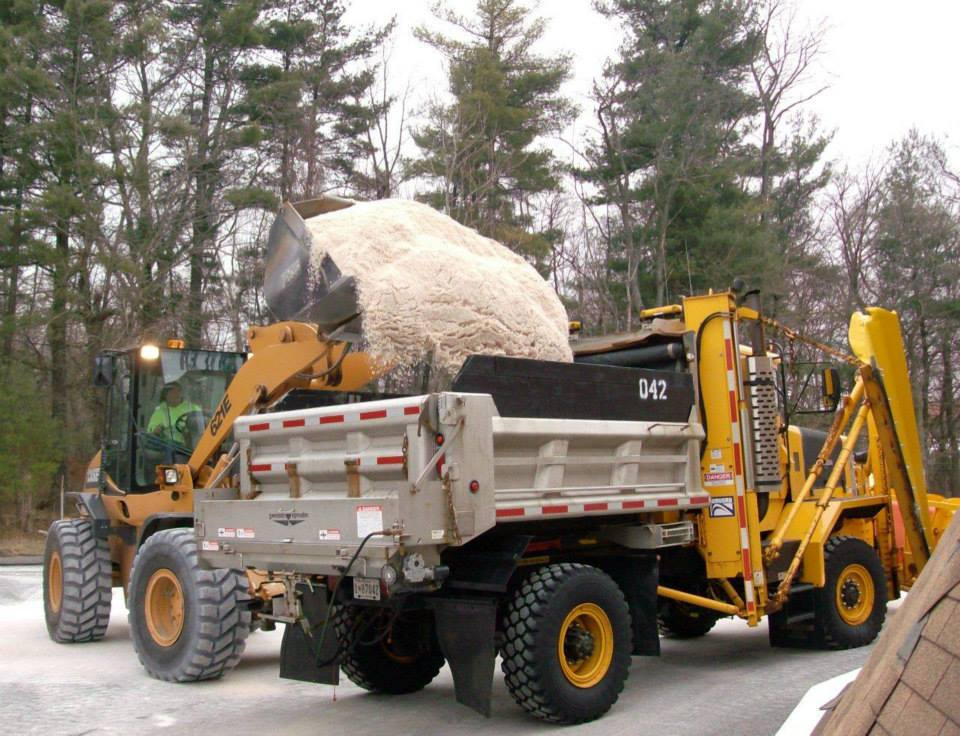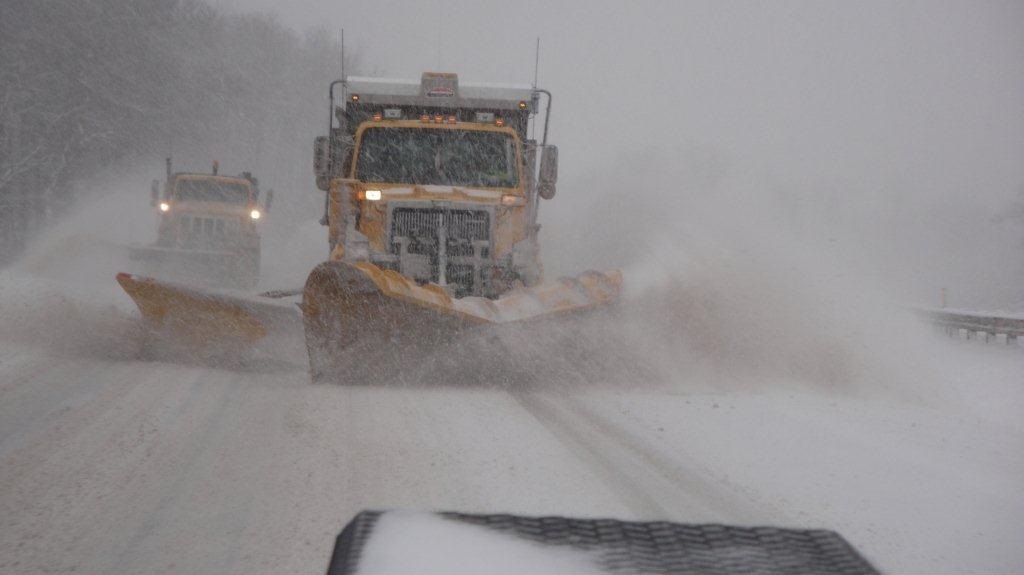
Photo Credit: Maryland State Highway Administration
Keeping Maryland moving during a winter weather event depends on the cooperation of many State and local government agencies. Treatment for ice and snow is a top priority in keeping our citizens safe and our roads clear for business.
In their own home and yards, homeowners are using salts and sand mixtures around homes, sidewalks and parking areas to combat ice and snow.
But what happens when the ice and snow melt?
With an increase in the usage of salts comes an increase of salt in our waterways. A recent study in Minnesota suggests that 70 percent of salt applied to roads stays with the region’s watershed; moreover it can take decades for the salt to flush out of a watershed. Research indicates that although chloride can originate from natural sources, most of the chloride that enters the environment is associated with the storage and application of road salt. Road salt accumulation and persistence in watersheds poses risks to aquatic ecosystems, water quality and potential impacts to drinking water.
Impact of road salt and sand on the environment and public health
As winter snow melts and spring rains begin, stormwater carries salt that has accumulated over the winter into stormdrains and surface waters such as lakes, ponds, drinking water reservoirs and streams. Road deicing is the most likely cause of increases in sodium and chloride concentrations in the Baltimore reservoirs since the 1980s. Road salt and sand that reach our waterways can:
- Threaten aquatic life that is sensitive to salt levels.
- Infiltrate groundwater, which can then flow into surface water.
- Leach into the ground and change the soil composition, making it hard for plants to survive.
- Damage vegetation and soils along the shoulders of roads, causing erosion.
- Deteriorate paved surfaces, buildings and infrastructure.
- Clog stormwater catch basins and fill streambeds, causing the potential for flooding.
- Accumulate in drinking water reservoirs near highways and salt storage areas. Sodium contributes to cardiovascular, kidney and liver diseases and is directly linked to high blood pressure. Chloride can add a salty taste to water and corrode pipes.
Reducing impacts of road salt treatment in Maryland
State and local jurisdictions are using best management practices to keep roads clear of snow and our waterways free from its damaging effects. Maryland State Highway Administration (MDSHA) in conjunction with MDE published best management practices in October 2013 that includes:
- Improved forecasting and road weather information systems. Targeting roads or areas in most need of treatment.
- Using the right amount of road salt. Equipment using calibrated spreaders with automatic controls is best.
- Applying at the right place and time. Curves, bridges, overpasses and shaded areas are most vulnerable to icy conditions. Applying before a storm hits and using a brine treatment can reduce the actual amount of salt applied.
- Training operators. This is particularly important when, as in Maryland, many of the operators that treat roads during storms are actually contractors, not SHA employees.
- Proper storage of salt and sand.
- Use of alternative chemicals. MdSHA uses calcium chloride during extremely cold storms, and is experimenting with sugar beet molasses. Additionally, some areas of the country are using alternatives such as calcium magnesium acetate (CMA), sugar beet molasses, cheese brine and others to reduce the use of salt.
- MDE has initiated efforts to develop water quality criteria to address excess salts and protect aquatic life. Determining the protective concentration level for specific salts is complex because different organisms have different sensitivities and local conditions may also influence the toxicity of contaminants.
Taking action at home

Photo Credit: Maryland State Highway Administration
Many Maryland residents use salt to reduce ice accumulation on steps, walkways and driveways. Not only do deicers impact water quality, but they can damage or kill vegetation near the application sites. Harsh chemicals can also be dangerous for children and pets. Tips for reducing or eliminating the use of excessive deicers at home include:
- Clear walkways and other areas before the snow turns to ice and avoid the need for chemical deicers.
- Track the weather and only apply deicers when a storm is imminent. If a winter storm does not occur, sweep any unused material and store it for later use.
- Only use deicers in critical areas and apply the least amount necessary to get the job done.
- Store deicing materials in a dry, covered area to prevent runoff.
- Reduce salt use by adding sand for traction, although care is needed to avoid clogging storm drains. Natural clay cat litter also works well for this purpose.
- If your source of drinking water is from your own private well, avoid applying salt near the well head.
- Don’t use urea-based fertilizers as melting agents. Runoff can increase nutrient pollution.
Related links
Contact
Office of Communications
410-537-3003
[email protected]
